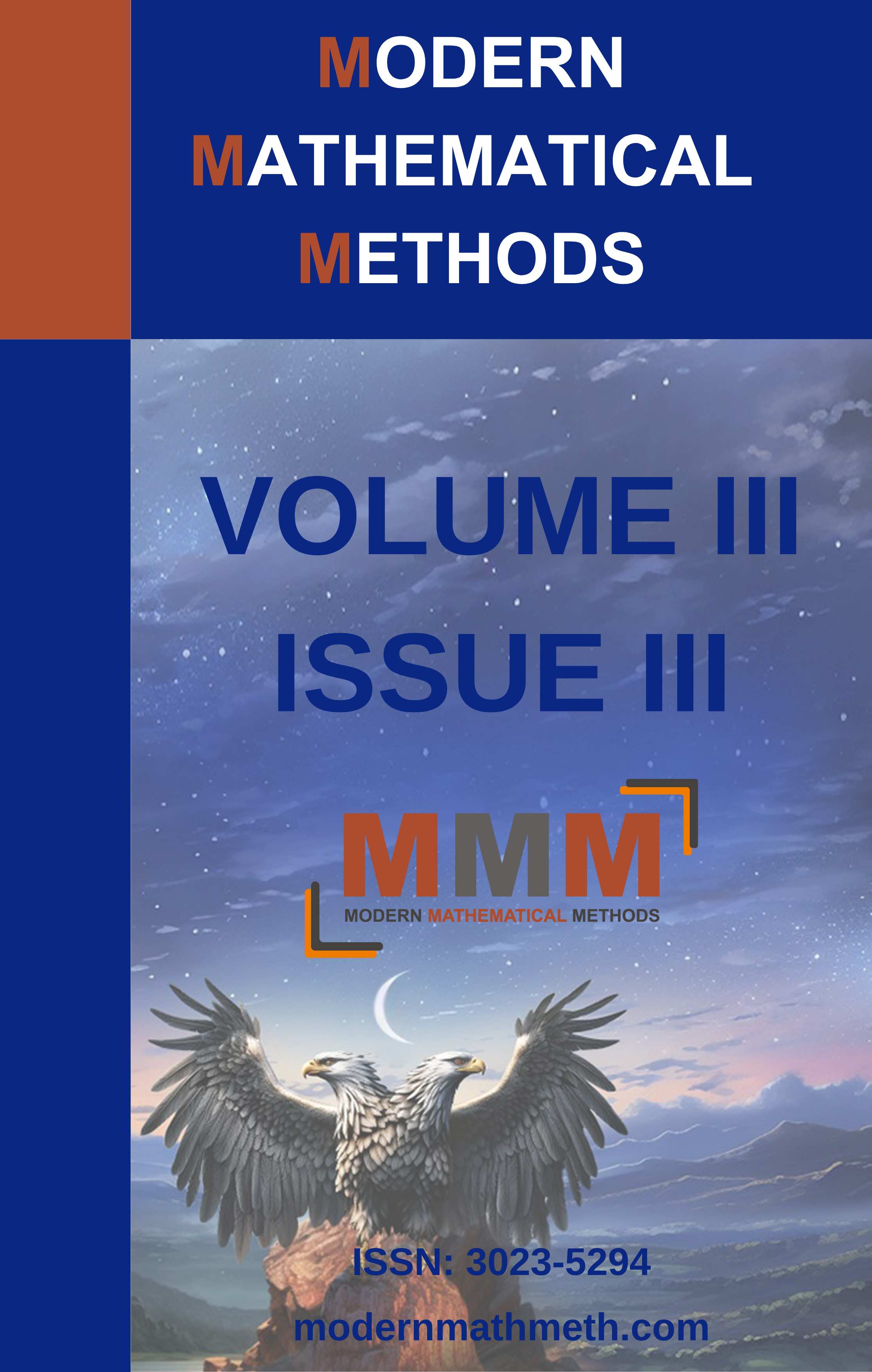Functors induced by comma categories
DOI:
https://doi.org/10.64700/mmm.76Keywords:
Comma categories, functors, slices, orbitsAbstract
Category theory provides a collective description of many arrangements in mathematics, such as topological spaces, Banach spaces and game theory. Within this collective description, the perspective from any individual member of the collection is provided by its associated left or right slice. The assignment of slices to objects extends to a functor from the base category, into the category of categories. Slice categories are a special case of the more general notion of comma categories. Comma categories are created when two categories \(\mathcal{A}\) and \(\mathcal{B}\) transform into a common third category \(\mathcal{C}\), via functors \(F,G\). Such arrangements denoted as \([F;G]\) abound in mathematics, and provide a categorical interpretation of many constructions in dynamics. Objects in this category are morphisms between objects of \(\mathcal{A}\) and \(\mathcal{B}\), via the functors \(F, G\). We show that these objects also have a natural interpretation as functors between slice categories of \(\mathcal{A}\) and \(\mathcal{B}\). Thus even though \(\mathcal{A}\) and \(\mathcal{B}\) may have completely disparate structures, morphisms in \(\mathcal C\) lead to functors between their respective slices. We present this relation in the form of a functor from \(\mathcal C\) into the category of left slices. The proof of our main result requires a deeper look into associated categories, in which the objects themselves are various commuting diagrams.
References
J. Adámek, H. Herrlich and G. Strecker: Abstract and concrete categories, Wiley-Interscience, (1990).
J. Adámek, S. Milius and J. Velebil: Iterative algebras at work, Math. Struct. Comp. Sci., 16 (6) (2006), 1085–1131.
A. Aral: Weighted approximation: Korovkin and quantitative type theorems, Modern Math. Methods, 1 (1) (2023), 1–21.
T. Brook: Finiteness: Another aspect of topoi, Bull. Australian Math. Soc., 12 (2) (1975), 317–318.
K. Cho, B. Jacobs: Disintegration and bayesian inversion via string diagrams, Math. Struct. Comp. Sci., 29 (7) (2019), 938–971.
M. Clementino, E. Giuli and W. Tholen: Topology in a category: Compactness, Portugaliae Math., 53 (4) (1996), 397-434.
S. Das: The categorical basis of dynamical entropy, Appl. Categ. Structures, 32 (2024), Article ID:8.
S. Das: Homology and homotopy for arbitrary categories, arXiv 2404.03735, (2024).
S. Das: The concept of nullity in general spaces and contexts, arXiv 2507.00212, (2025).
S. Das, D. Giannakis: On harmonic Hilbert spaces on compact abelian groups, J. Fourier Anal. Appl., 29 (1) (2023), Article ID: 12.
S. Das, T. Suda: Dynamics, data and reconstruction, arXiv 2412.19734, (2024).
S. Das, T. Suda: Dynamical systems as enriched functors, arXiv 2509.05900, (2025).
D. Dikranjan, E. Giuli: Closure operators i, Topology Appl., 27 (2) (1987), 129–143.
D. Dikranjan, W. Tholen: Categorical structure of closure operators: with applications to topology, algebra and discrete mathematics, Springer Science & Business Media, Dordrecht (2013).
L. dos S. Leal, P. B. Menezes, D. M. Claudio and L. V. Toscani: Optimization problems categories, International Conference on Computer Aided Systems Theory, Springer (2001), 285–299.
K. Esfahani, S. D. Marchi and F. Marchetti: Moving least squares approximation using variably scaled discontinuous weight function, Constr. Math. Anal., 6 (1) (2023), 38–54.
P. Freyd: Aspects of topoi, Bull. Australian Math. Soc., 7 (1) (1972), 1–76.
P. Freyd, G. Kelly: Categories of continuous functors, i, J. Pure Appl. Algebra, 2 (3) (1972), 169–191.
T. Fritz: A synthetic approach to Markov kernels, conditional independence and theorems on sufficient statistics, Adv. Math., 370 (2020), Article ID:107239.
T. Fritz, E. Rischel: Infinite products and zero-one laws in categorical probability, Compositionality, 2 (3), (2020), 1–20.
N. Ghani, J. Hedges: A compositional approach to economic game theory, Studia Logica, 82 (2006), 1–27.
N. Ghani, C. Kupke, A. Lambert and F. Forsberg: A compositional treatment of iterated open games, Theoret. Comput. Sci., 741 (2018), 48–57.
J. Goguen: A categorical manifesto, Math. Struct. Comp. Sci., 1 (1) (1991), 49–67.
J. Goguen, R. Burstall: Some fundamental algebraic tools for the semantics of computation: Part 1: Comma categories, colimits, signatures and theories, Theoret. Comput. Sci., 31 (1-2) (1984), 175–209.
R. Goldblatt: Topoi: the categorial analysis of logic, Elsevier, Amsterdam (2014).
M. Grandis, R. Paré: Limits in double categories, Cah. Topol. Géom Différ Catég, 40 (3) (1999), 162–220.
M. Grandis, R. Paré: Adjoint for double categories, Cah. Topol. Géom Différ Catég, 45 (3) (2004), 193–240.
J. Hu, H. Zhu: Special precovering classes in comma categories, Sci. China Math., 65 (5) (2022), 933–950.
B. Hunt, T. Sauer and J. Yorke: Prevalence: a translation-invariant almost every on infinite-dimensional spaces, Bull. Amer. Math. Soc., 27 (2) (1992), 217–238.
M. Johnson, R. Rosebrugh and R. J. Wood: Lenses, fibrations and universal translations, Math. Struct. Comp. Sci., 22 (1) (2012), 25–42.
S. M. Lane: Categories for the working mathematician, Springer Science & Business Media, Dordrecht (2013).
W. Lawvere: Functorial semantics of algebraic theories, Pro. Nat. Acad. Sci., 50 (5) (1963), 869–872.
T. Leinster: A general theory of self-similarity, Adv. Math., 226 (4) (2011), 2935–3017.
T. Leinster: The categorical origins of Lebesgue integration, J. London Math. Soc., 107 (6) (2023), 1959–1982.
S. Moss, P. Perrone: A category-theoretic proof of the ergodic decomposition theorem, Erg. Th. Dyn. Sys., 43 12, (2023), 4166–4192.
K. Nakahira: Diagrammatic category theory, arXiv 2307.08891, (2023).
R. Paré: Connected components and colimits, J. Pure .Appl. Alg., 3 (1) (1973), 21–42.
C. Pech, M. Pech: Fraïssé limits in comma categories, Applied Categorical Struct., 26 (4) (2018), 799–820.
E. Riehl: Category theory in context, Courier Dover Publications, New York (2017).
J. Rotman: An introduction to algebraic topology, Springer Science & Business Media, Dordrecht (2013).
D. Rydeheard, R. Burstall: Computational category theory, Prentice Hall Englewood Cliffs, (1988).
D. Schlomiuk: An elementary theory of the category of topological spaces, Trans. Amer. Math. Soc., 149 (1) (1970), 259–278.
T. Streicher: Introduction to category theory and categorical logic, Lecture notes, Technische Universitat Darmstadt (2004).
T. Suda: A categorical view of Poincaré maps and suspension flows, Dyn. Syst., 37 (1) (2022), 159–179.
Downloads
Published
How to Cite
Issue
Section
License
Copyright (c) 2025 Suddhasattwa Das

This work is licensed under a Creative Commons Attribution-NonCommercial 4.0 International License.


